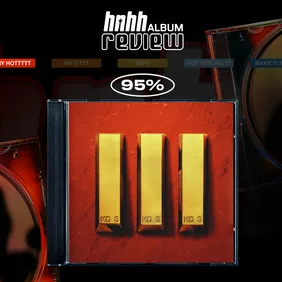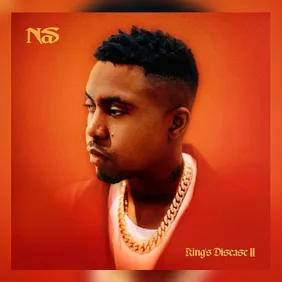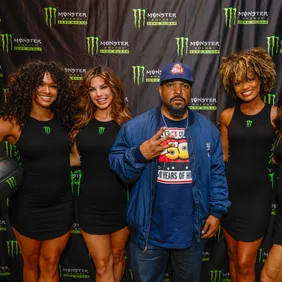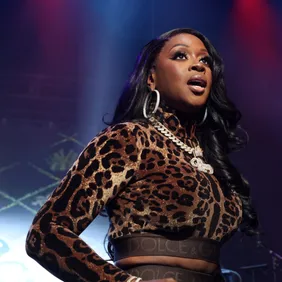Nas originally released his first studio album in 1994; his most recent album was released twenty-seven years later. Rappers have lived entire lives in that timespan. The game underwent sonic and stylistic transformations, some of which could be likened to body horror by certain skeptics. Nas donned a bloody apron and performed an autopsy on hip-hop in 2006. He declared Life Is Good in 2012. In 2020, he won his first Grammy Award for King’s Disease. Less than one year later, he announced a sequel with an air of unpredictability.
"They say I’m a legacy artist, I blew up the price," he raps, on Kings Disease 2’s reflective "Moments." "Thirty years later, who woulda knew dude would be nice?" An admittedly simple question on the surface, though complex on a root level. Does Nas resent the label of legacy artist and the implications therewithin? Did he himself know he would stay sharp at the age of forty-seven?
It’s an unspoken glimpse into the mind of an aging hip-hop legend, who in the same song uses nostalgia to forge a personal connection with the listener. "Moments you can't relive, like your first time buggin from somethin' that Nas said," he raps, inviting fans to reflect on exactly that. It's those who actively abide by his request and call to mind their favorite Nas bars who will gain the most from King’s Disease. Those who have aged alongside him from afar, who may relate more than they’d care to admit to his menu adjustments. “Set my feet on a private island, house come with a staff,” he spits, lining up a flex of the year contender. “Chef knows how to cook with no salt and low fat.”
Nostalgia is a driving throughline on King’s Disease II. Highlight “Death Row East” is a reward for those attuned to deeper chapters of Nas lore. His feud with 2Pac -- which ran parallel with Suge Knight’s Eastern ambition -- is the main topic of exploration, recounted with the storytelling excellence we’ve come to expect from Nas. The subject matter will inherently prove more compelling to those familiar with the context of Death Row’s dominance, as Nas wastes little time on expository matters. The past is etched within the DNA of the instrumentation; Hit-Boy recently revealed that the spirit of the late Johnny “J”, Death Row in-house producer on 2Pac’s Me Against The World and All Eyez On Me, lived within the beat.
There’s a dreamlike wistfulness on “Count Me In” and the first half of “Rare,” a similar sonic aesthetic seen on Stillmatic’s “You’re Da Man.” Such instrumentals seem to awaken spirited performances from Nas, whose assured and familiar cadence blends nicely over Hit-Boy’s dusty lullabies. Elsewhere, memories arise as unexpected snapshots. “‘Quiet Storm’ on the radio puttin me in the zone,” he raps on “No Phony Love,” expressing his own nostalgic connection to Mobb Deep’s classic 1999 single. On the Eminem and EPMD-assisted “EPMD 2,” one of the most electrifying moments arrives when Nas makes direct reference to his own mythology, alluding to his notorious declaration of hip-hop’s death and bookending it with an epilogue.
That’s not to suggest a deep-rooted knowledge of Nas is a prerequisite for enjoying King’s Disease II. There are certainly enough production choices tethered to a more contemporary sound, entirely crafted by a visionary musician who continues to grow more impressive with every release. Hit-Boy is as important to the kingdom’s day-to-day operations as Nasir, as adept at recreating the golden-era as he is acclimating his partner to custom-fitted trap production. Lil Baby’s “for real, for real” ad-lib is used to outstanding efficacy on “40 Side,” an emphatic finger-point from the hype-man Nas never knew he needed. The A Boogie Wit Da Hoodie & YG-assisted “YKTV” hits the mark as the album’s archetypical “banger,” a posse cut on which Nas invites fans to imagine him rapping over a Migos instrumental; discern from that what you will. Yet whether he’s ushering Nas into the new musical age or recreating his take on the golden era, there’s a pristine quality to Hit-Boy’s production that gives it a distinctive -- and frankly inimitable -- feel.
Will King’s Disease II ever achieve the same cultural value as Illmatic? Unlikely such a possibility may seem to some, it’s frankly impossible to declare at this current juncture, given that the album is little older than a week. Doubtless that Nas’ debut has cast a long and impenetrable shadow over his discography, an older sibling whose achievements always sound a little more impressive to the doting parent.
Yet in many ways, the self-painted portrait of an artist who lived through twenty-seven years of hip-hop stardom makes for a fascinating and thought-provoking examination. There may be a few creases here, a notable spot of restoration there, but for the most part, the colors remain vibrant and meticulously selected. Though plenty of conclusions can be drawn from a lasting gaze, perhaps the most resounding is one put forth by the man himself: Nas Is Good.







